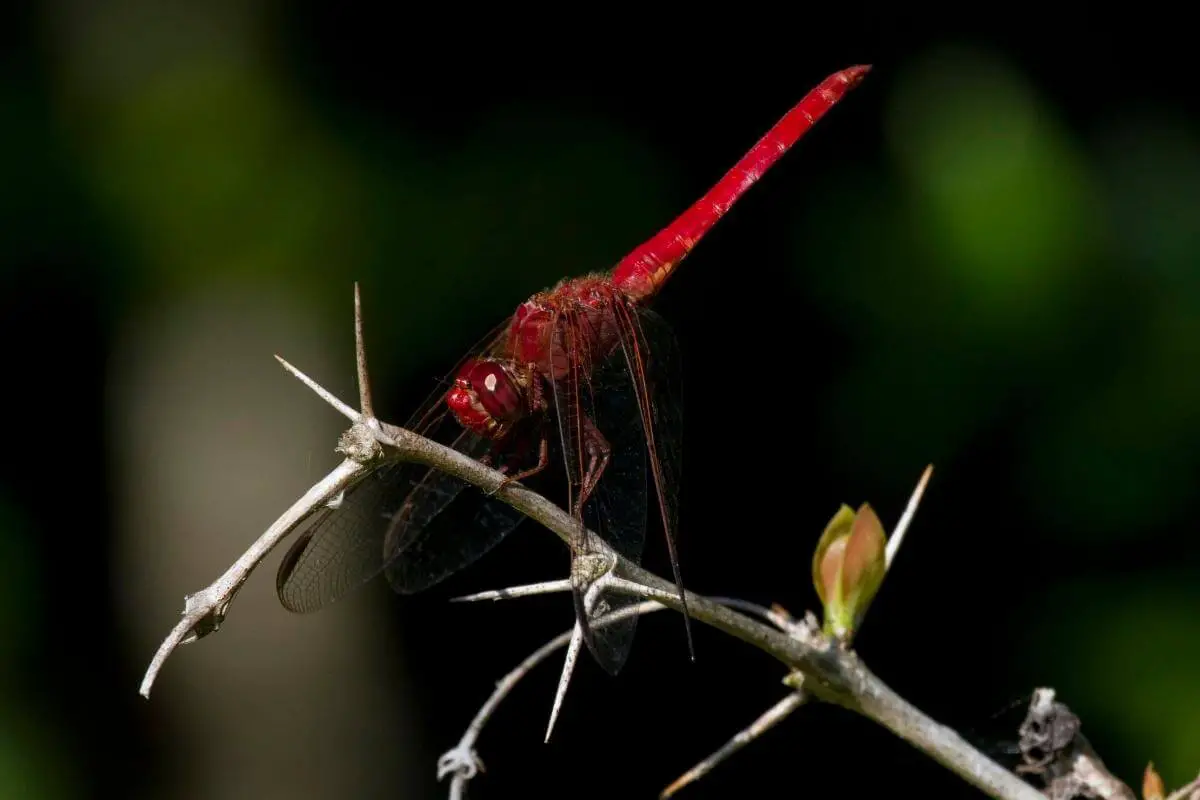Dragonflies are one of the oldest species of insects still roaming the earth, and you’ll often see them buzzing by garden ponds, fountains, or natural waterways.
They’re stunning to watch as they fly back and forth on their daily business, and that’s likely due to their almost insatiable appetite.
Besides their graceful beauty, dragonflies are great in the garden as they effectively control the population of other flying insects, such as mosquitoes and flies. An adult dragonfly can eat anywhere from 30-100 mosquitoes each day, or around 16,000 insects each summer.
Why Are Dragonflies Good for Your Garden? (Pros)
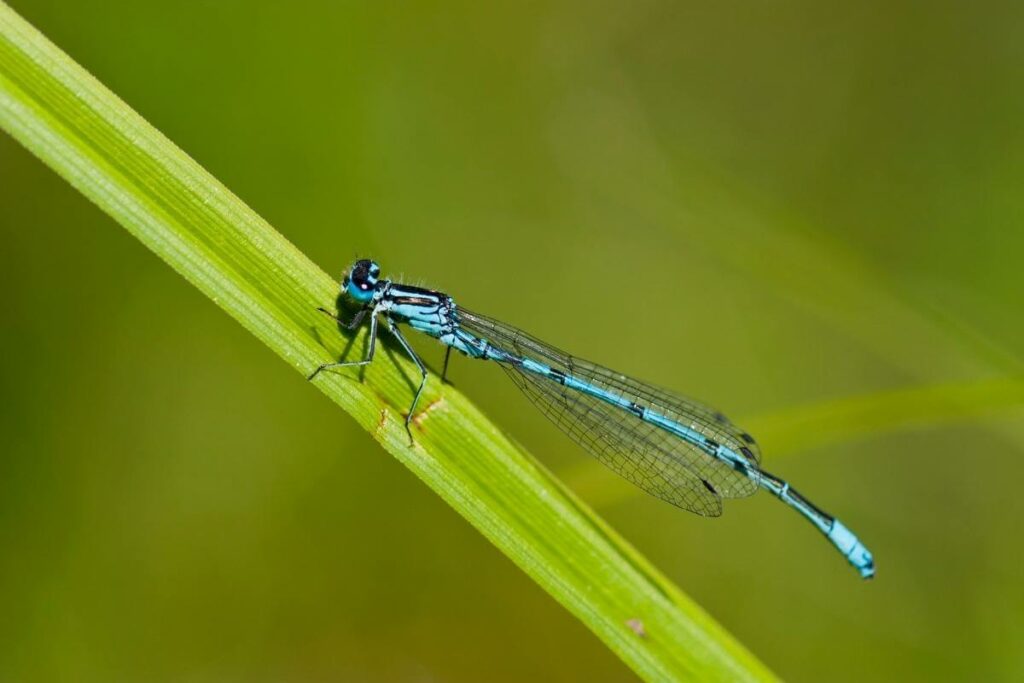
- Dragonflies are harmless to people and have been welcomed into gardens for centuries. They are excellent fly and mosquito hunters and their agile and powerful wings and exceptional vision allow them to catch small flying prey with ease.
- Dragonflies are also a great indication of good air quality, as they cannot withstand polluted air and for this reason, it is rarer to see dragonflies in dense cities or urban environments. If you have an abundance of dragonflies living in your garden, you’re likely breathing the best air quality possible.
- With their high carnivorous appetite, dragonflies are also a great way to cull spider colonies. Small spiders are easy prey for the agile and speedy dragonfly. A dragonfly’s powerful wings can also cut through spiderwebs in its wake.
What Aren’t Dragonflies Good for Your Garden (Cons)
Honestly, there aren’t many reasons why you shouldn’t be happy about dragonflies being in your garden.
They are harmless to humans and provide a great range of advantages as mentioned above:
- Unfortunately, dragonflies do not aid pollination. They do not intentionally visit flowers solely for the purpose of collecting nectar. However, they may chase or hunt insects that gather near flowers such as small flies or moths.
- Dragonflies are carnivorous and have an enormous appetite, eating thousands of smaller insects each week. In this regard, they are a predator to insects such as ants, small moths and flies, and other small bugs you may just happen to like.
Dragonfly Life Cycle
Dragonflies actually start their lives as larvae living in ponds or waterways.
The female will lay eggs in damp areas or in mud and the baby dragonflies (called ‘Nymphs’) hatch a few weeks later.
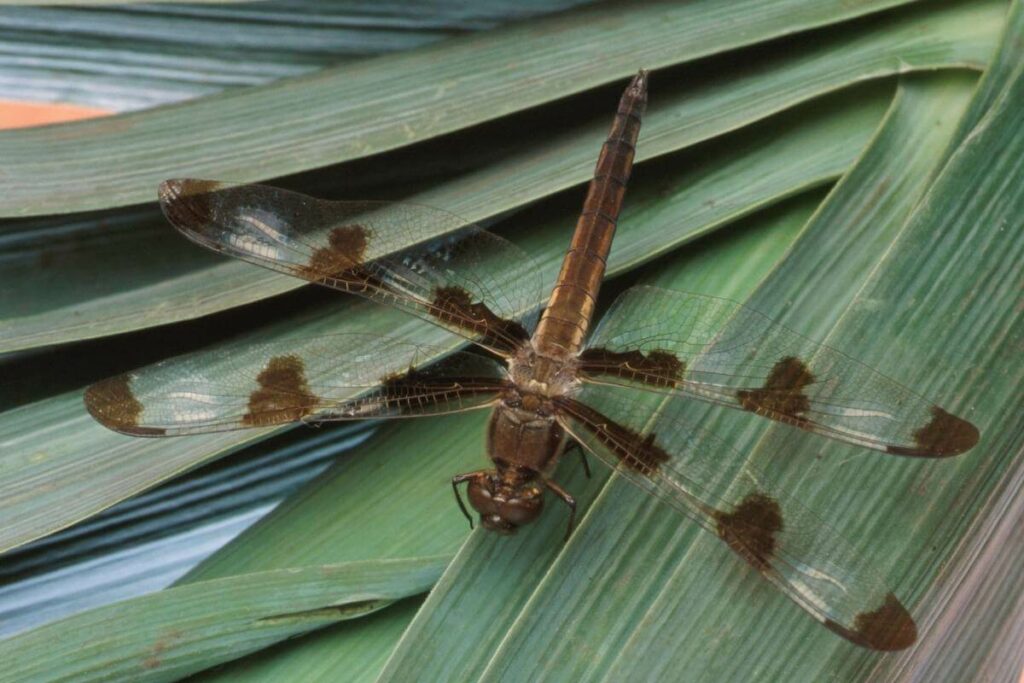
The nymph phase of a dragonfly’s life cycle lasts around 1-2 years depending on the species of dragonfly.
They feed on virtually anything:
- pond bacteria
- algae
- insect larvae
- tiny fish
- mosquitoes
- tadpoles
This benefits most waterways by keeping at bay pest insects such as mosquitoes and flies.
At the end of its nymph stage, a dragonfly has developed an exoskeleton and crawls out of the water.
Its exoskeleton cracks open and its four wings come out, and they dry over the next several hours, preparing for their maiden flight.
As adults, dragonflies live for anywhere between 2 weeks and a year depending on their species. The Libellulidae family is the most common dragonfly species with over 100 different types in the US.
These common dragonflies are often referred to as ‘Skimmers’ and are brightly colored dragonflies that can be found darting around ponds, rivers, or lakes all over the country.
Less-known Fact: Most species of dragonfly have a lifespan of around one generation per year.
How to Attract Dragonflies to Your Garden
With over 5,000 known species of dragonflies, it’s not too difficult to attract dragonflies to your garden.
There are a few tried and tested methods that can provide the perfect environment for welcoming these graceful creatures to your garden.
Install a Pond or Marsh Area
Any garden space that features a pond of 20 feet in diameter will attract dragonflies.
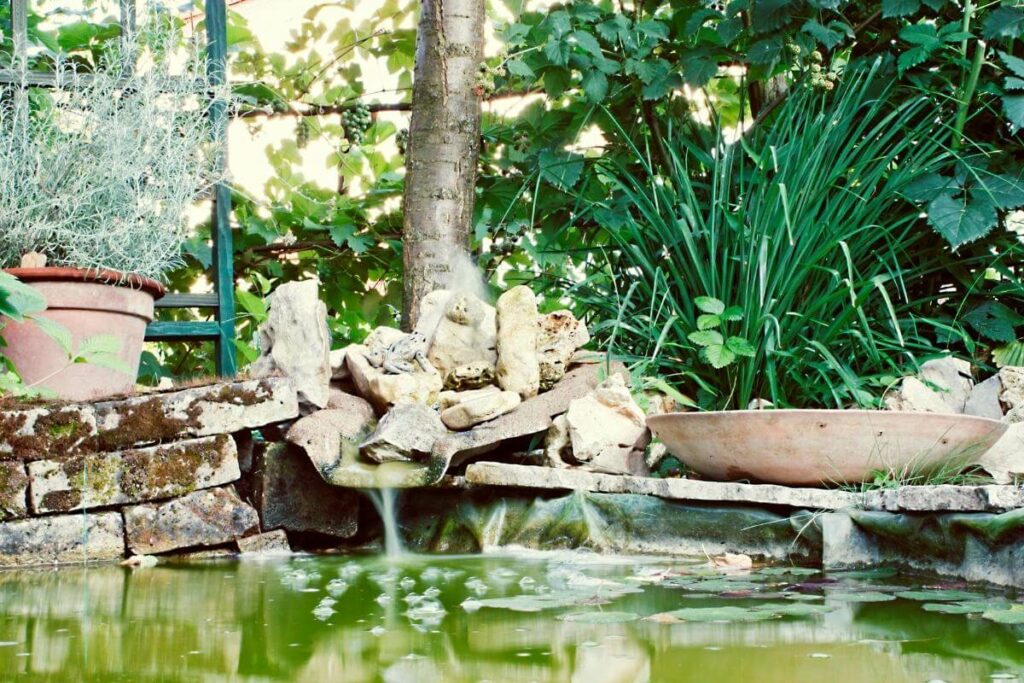
They will utilize the ground for food, breeding, and during the nymph phase of the dragonfly life cycle.
If you install a pond, do not add any fish, as these will prey on dragonflies.
A small marsh area or bog will also attract dragonflies as this is an ideal breeding ground for small insects that dragonflies feast on.
An area that has poor drainage in your yard is an ideal opportunity to create a boggy marsh-like area in your garden.
Large Rocks for Sunbaking
Dragonflies are exothermic, meaning they use the sun to gather the heat they need throughout the day.
You’ll often see dragonflies either humming around a pond or perched on a flat rock, basking in the sunshine.
Beside your pond, lay some large flat rocks that will collect heat from the sun during the day and you’ll be rewarded with sun baking dragonflies throughout the warmer months!
Install Perches and Stakes
Although it’s most common to see dragonflies in flight, they do like tall stakes where they can comfortably perch and lay wait, preying on smaller insects.
Try This: Setting up several stakes around 3 feet high throughout your garden is a great way to attract dragonflies to any garden.
Good Air Quality
Dragonflies prefer good air quality with little pollution so attracting a dragonfly colony to a garden in a dense urban area may be tricky.
If you live in a rural area, the above options should prove fruitful for attracting dragonflies.
Make sure there’s plenty of foliage, shrubs, and trees for the dragonflies to perch and hunt for smaller insects.
Avoid Installing Bug Zappers or Using Insecticides
As dragonflies are natural mosquito and fly hunters, avoid using bug zappers or insecticides in your garden, as these will inhibit any dragonfly colonies that may frequent your garden.
Plants that Dragonflies Adore
Dragonflies are not fussy creatures when it comes to plants, however, there are a few clear favorites that are grown easily that will help to lure dragonflies to your garden.
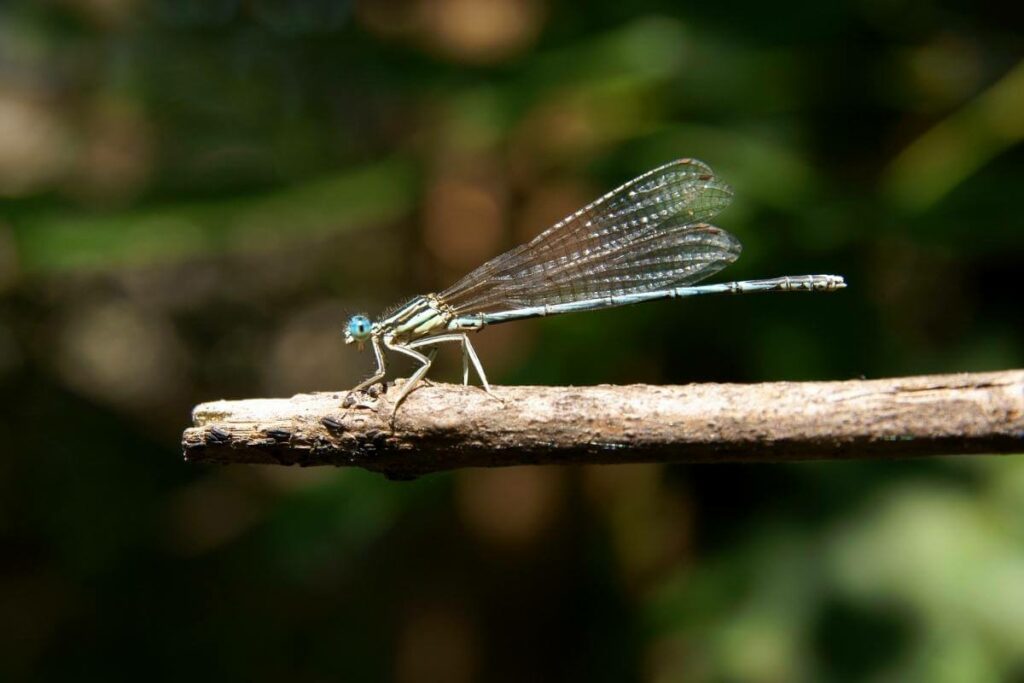
Most of these plants will also contribute stunning flowers and coloring to your garden during the spring and summer seasons.
Dwarf Sagittaria
If you are living in USDA zones 6-10, submerged plants such as Dwarf Sagittaria grow very well and provide perfect breeding ground and shelter for dragonflies.
Swamp Milkweed
Another plant that thrives in wet and moist conditions is the Swamp Milkweed.
Don’t be put off by the name, these plants grow beautiful white and pink flowers that attract dragonflies, bees, and even butterflies.
Black-Eyed Susan
The Black-Eyed Susan is an attractive flowering plant that attracts bees, butterflies, and dragonflies.
What’s More: They grow easily in almost any soil type and will make a welcome addition of color to your garden during the spring and summer seasons.
Meadow Sage
If you’re looking for a hardy plant that can survive in warmer conditions, then consider planting Meadow Sage.
This flowering perennial grows bright purple flowers from lush green foliage and requires little watering.
It’s also a favorite for butterflies and dragonflies!
Water Lily
No pond setting is complete without water lilies!
These beautiful flowering plants grow submerged with large floating leaves that are the perfect pontoon for your dragonfly colony.
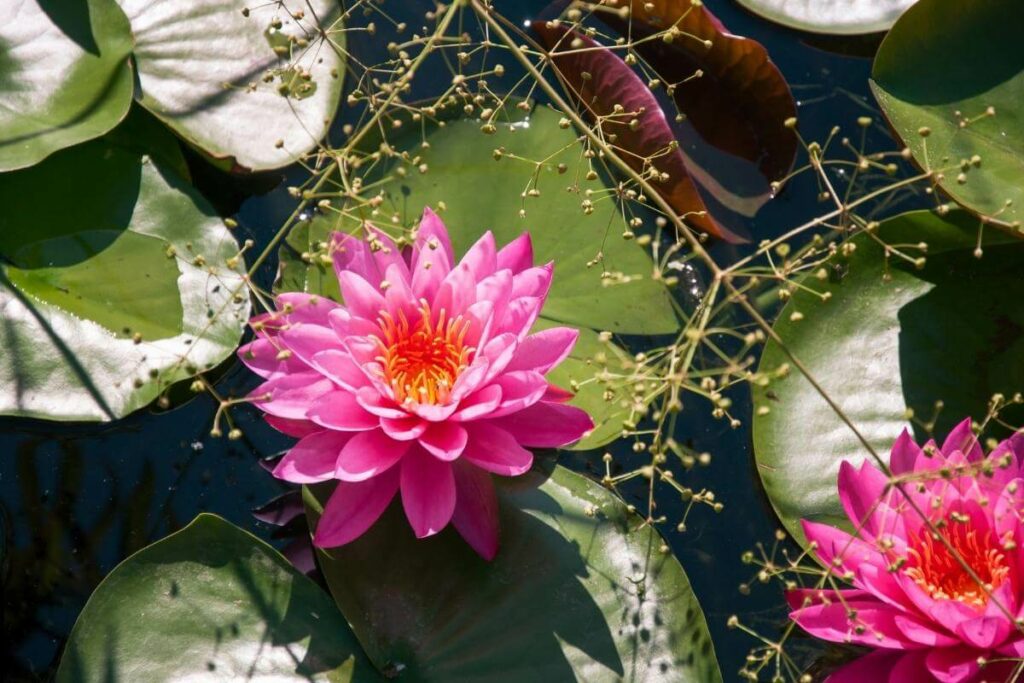
They also provide excellent cover for Dragonflies that are looking to take a nap or rest during the day, and the colorful white or pink flowers attract bees and butterflies too!
Lotus Flower
Another great pond addition is the Lotus Flower, or commonly known as the Indian flower.
These striking pink flowers grow and float on top of the water surface from a submerged root system.
They grow rapidly and are excellent at attracting a range of useful insects such as butterflies, bees, and dragonflies.
Conclusion
Dragonflies not only look elegant and graceful in your garden, but they are also beneficial in many ways, from keeping pest insects such as mosquitoes and flies under control to culling other garden nasties such as spiders and moths.
As we have discovered, there are far more pros than cons when considering a dragonfly’s merit in your garden.
Setting up your garden to attract dragonflies is as simple as a few carefully chosen plants and a good-sized pond, and with these tips, you’ll have delightful colonies of dragonflies buzzing all over your garden in no time at all!
Final Words
- What Is the Most Common Bird in Massachusetts?
- How to Attract Green Finches to Your Garden?
- What Do Chaffinches Eat?
